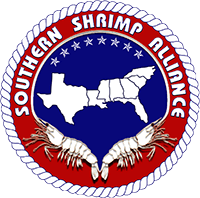After refusing only four entry lines of Vietnamese seafood in September, the U.S. Food and Drug Administration (FDA) reported refusing thirteen entry lines of Vietnamese seafood in October. Nine of the thirteen Vietnamese seafood refusals were for entry lines of shrimp; six of these were for the presence of banned veterinary drug residues.
The shrimp refused for veterinary drug contamination came from two different Vietnamese suppliers: Cuulong Seaproducts Company and Fimex VN. Neither of these companies is currently listed on the FDA’s Import Alert for aquacultured seafood products contaminated by unapproved drugs (Import Alert 16-124). However, the FDA’s findings are consistent with the findings of the Japanese government. In December 2011 and January 2012, Japan rejected five shipments of shrimp from Fimex VN contaminated by enrofloxacin, a fluoroquinolone. Similarly, in December 2011 Japan rejected a shipment of shrimp from Cuulong Seaproducts Co. contaminated by enrofloxacin.
Despite the red flags raised by shrimp aquaculture production and exports from Vietnam, there is little to indicate heightened concern by U.S. companies dealing in imported shrimp. For example, commercial shipment information indicates that shrimp from Cuulong Seaproducts Company and Fimex VN has been imported in significant quantities this year by well-known seafood companies – some labeled under a brand name presumably for direct sale into the retail market.
Evidence that the FDA continues to review and inspect Vietnamese shrimp imports for contamination by banned drugs is welcome. At the same time, the fact that exporters with a history of shipping contaminated shrimp seem to have no problems selling to established seafood importers and distributors is disappointing. A tolerance for contaminated shrimp by U.S. importers appears to have established tolerance for the use of banned antibiotics in Vietnamese aquaculture.
The continued use of these antibiotics benefits no one. And the harm of continued abuse of antibiotics is severe. The use of fluoroquinolones in particular promotes the development of antibiotic-resistant bacteria that poses a grave threat to people not just in Vietnam but around the world. It is well past the time for the importing industry to get their collective heads out of the sand and quit denying that this problem exists. The importing industry and the domestic industry as well as the entire shrimp eating public would be well served if folks would own the problem and begin fixing it. So far, according to spokespeople for the importing industry, the entire world is wrong when millions of pounds of shrimp are rejected from countries that have even a modicum of food safety regulations. Instead of saying this issue is imagined by protectionists, that there are no illegal chemicals in farm raised shrimp from Southeast Asia, and that all of the industrialized world is wrong, just own up to the problem and fix it.
Same goes for child and forced labor in the Thai shrimp industry. According to some in the importing industry:
Three weeks ago… there is no problem, any labor abuse allegations aimed at the Thai shrimp industry are the figments of the wild imaginations of protectionists and labor unions and hippies.
Two weeks ago… there may be some isolated problem of only very limited impact and scope, any discussion of the problem is exaggerated by protectionists and labor unions and hippies.
This week… the U.S. importing industry and Thai shrimp processors are at the vanguard of the battle to wipe out the terrible problem of child and slave labor in contract peeling houses in Thailand, and statements to the contrary are lies concocted by protectionists and labor unions and hippies.
John Williams
